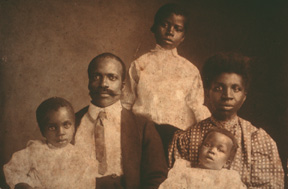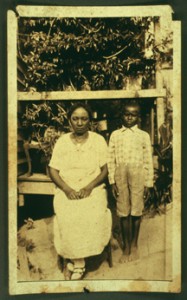
One hundred oral histories of life in the Jim Crow South, complete with transcripts, have been digitized and made available on the Duke University Libraries website and iTunes U, a dedicated area within the iTunes Store.
From 1993 to 1995, dozens of graduate students at Duke and other schools fanned out across the South to capture stories of segregation as part of “Behind the Veil,” an oral history project led by Duke faculty historians William Chafe, Raymond Gavins, and Robert Korstad at the Center for Documentary Studies. The students sought to preserve the stories before the men and women who survived Jim Crow passed away. The interviews—some 1,260 in all—were recorded on regular cassette tapes, transcribed and archived in the John Hope Franklin Research Center, part of the Rubenstein Library.
Some of the interviews were included in an award-winning book and radio documentary, Remembering Jim Crow: African Americans Tell About Life in the Segregated South, produced ten years ago by the Center for Documentary Studies and American RadioWorks.

But many of the interviews never made it into the book or documentary.
Take Imogene Watkins Wilson of Memphis, Tennessee, who tells the story of how a group of African-American businessmen launched a boycott of that city’s largest daily newspaper. The year was 1957, and the men bought every copy they could find of the Memphis Commercial Appeal and threw them in the Mississippi River. They were protesting the paper’s policy of not using courtesy titles, like Mr. or Mrs., when referring to blacks.
“I don’t care how prominent you were, you were just Willie Brown,” said Wilson, a schoolteacher whose husband edited the Memphis Tri-State Defender, the city’s leading African-American newspaper. “You weren’t Rev. Willie Brown, you weren’t Dr. Willie Brown, you weren’t Professor Willie Brown. And then, if [they] referred to your wife, she was Suzie. Not Mrs. Suzie, just Suzie.”
Wilson’s words were recorded in a July 1995 interview with a Duke student, but her story never made the original project’s final cut. Now her memories—along with the personal accounts of scores of other Americans who lived through the Jim Crow era—are among the hundred stories that have been digitized and made available for free for researchers, genealogists, educators,
and others.
Other interviewees describe loss of land, educational inequity, and the terror of white supremacy. Another newly digitized story is told by Ernest A. Grant of Tuskegee, Alabama, who recounts how his mother had to flee town in the trunk of a car after an insurance salesman made advances on her and she burned him with a hot iron.
These interviews capture the vivid personalities, poignant personal stories, and behind-the-scenes decision-making that bring to life the African-American experience in the South during the late-nineteenth to mid-twentieth century. Not only do they offer a window onto an important era of American history, but they present that time through the words and experiences of the ordinary men and women who lived it.
Note: Photos from the John Hope Franklin Research Center, David M. Rubenstein Rare Book & Manuscript Library
See also:
Listen to the Behind the Veil interviews online
Roland Martin and Duke professor Bob Korstad discuss the Behind the Veil digital collection on the Tom Joyner Morning Show (11/21/2011)
Hear an interview on NPR’s “Tell Me More” about the Behind the Veil digital collection with Duke professor Bob Korstad and Leslie Brown of Williams College (11/25/2011)
Duke’s William Chafe and Leslie Brown of Williams College discuss the Behind the Veil digital collection on NPR’s Michael Eric Dyson Show (12/13/2011)
Duke professor Bob Korstad and Frank Stasio talk about the Behind the Veil digital collection on NPR’s “The State of Things” (12/14/2011)

